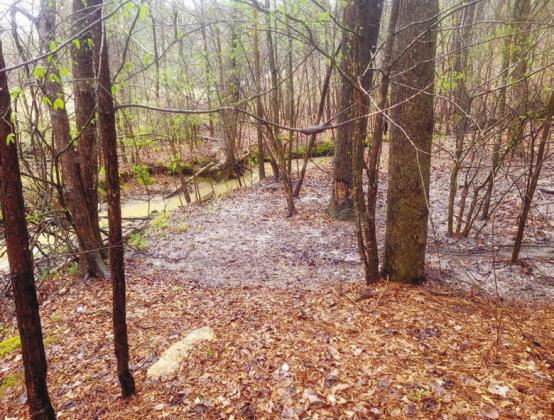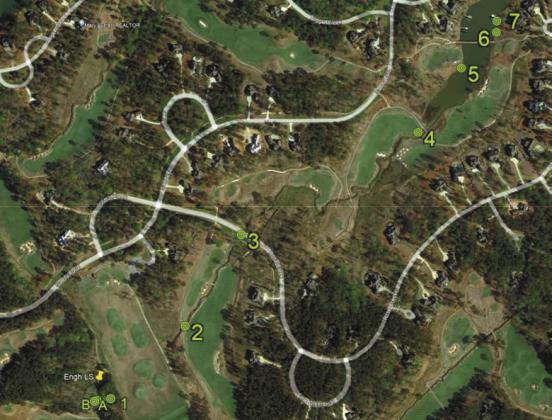GREENE COUNTY
February 23rd dawned clear and sunny in Greensboro. The city went about its business, students entered and exited schools, golfers appeared on the courses, and some boaters on the lake enjoyed a brief respite from the colder temperatures that swept through the area recently.
Unfortunately, that day, 271,000 gallons of raw sewage spilled into a small tributary that feeds right into Lake Oconee, the area’s primary water source and recreational treasure. It was five days before it was discovered by Piedmont Water on Feb. 27.
The spillage was discovered to have occurred at Piedmont’s Engh lift station next to Reynolds golf course. Reynolds alone has more than 20 lift stations of the approximate 71 stations Piedmont owns and manages. Lift stations are used to move wastewater from lower to higher elevations within wet well systems.
The systems collect wastewater at a low point in the collection network and pump it to identified treatment facilities. Also known as sewer pumping stations, these stations contain critical valves, pumps and electrical equipment necessary to move waste solids and liquids.
And, according to Piedmont Water’s CEO Brent Hurst, either an electrical surge or incorrect caliber setting to the variable frequency drive rendered the system incapable of alerting technicians to the problem. It wasn’t until the spill was identified five days after it happened that the spillage was contained and the area treated with lime.
“This current system has been running two years with no reported problems,” Hurst said. “Either an incorrect parameter setting was made or a power surge occurred to the system. We have automatic alerts that go to six specially trained technicians when this occurs. However, it didn’t happen due to this malfunction.”
Hurst explained that this particular lift station is routinely monitored with onsite inspections, and it was during that monitoring that the leak was discovered at their Engh Lift Station next to The Creek Club golf course at Reynolds Lake Oconee. It is one of five larger lift stations that are closely monitored due to their size. It was determined at that time that the spillage went into a small creek tributary that eventually leads to the lake.
Hurst asserts that Piedmont readily addressed the spill by immediately mitigating the issue, spreading lime on the spill site and determining where the spill flowed. It then filed the appropriate Environmental Protection Division (EPD) notice, put up signage alerting that a leak occurred and started water sampling.
According to the EPD, any spill in excess of 10,000 gallons is considered a major spill. Jessica Jones, program manager for the EPD’s Wastewater Management, Watershed Protection Branch, it is unknown when the spill reached the lake. The EPD watershed protection branch is charged with protecting and restoring Georgia’s water resources.
“We cannot provide an accurate date as the spill flowed in the tributary,” Jones said. “Piedmont Water provided a report that we investigate to ensure that they are in compliance with all regulations. Further, monitoring will be required weekly for one year and includes important data on fecal levels, PH quality, temperature and dissolved oxygen. All these are important indicators of lake water health.”
Piedmont reports that, by March 6, all indications from its monitoring showed that lake water sampling were within normal levels.
“Because the creek is flowing, it helped dilute the water before it reaches the lake,” Hurst said.
“We want to ensure the public we responded immediately once the spill was discovered, and we initiated many corrective measures, namely the repair of the variable frequency drive,” Hurst continued. “We have never significant spills and they have largely been confined to grinder systems you find in the subdivisions here. We have put a lot of emphasis on trained personnel to both mitigate and monitor any systems to prevent future failure.”
The next steps for the EPD include a formal report that may specify further enforcement measures for Piedmont. They are responsible for reviewing action plans provided by Piedmont to prevent re-occurrence and mandatory action items the EPD sites are completed.
Surprisingly, Jones claimed that they do not routinely go out on sites reporting spills. It was a month later that an official site visit occurred with district management. Because the wastewater came from a lift station into a stream and not directly into the lake, the EPD claims it was not required to issue a boil water notice.


